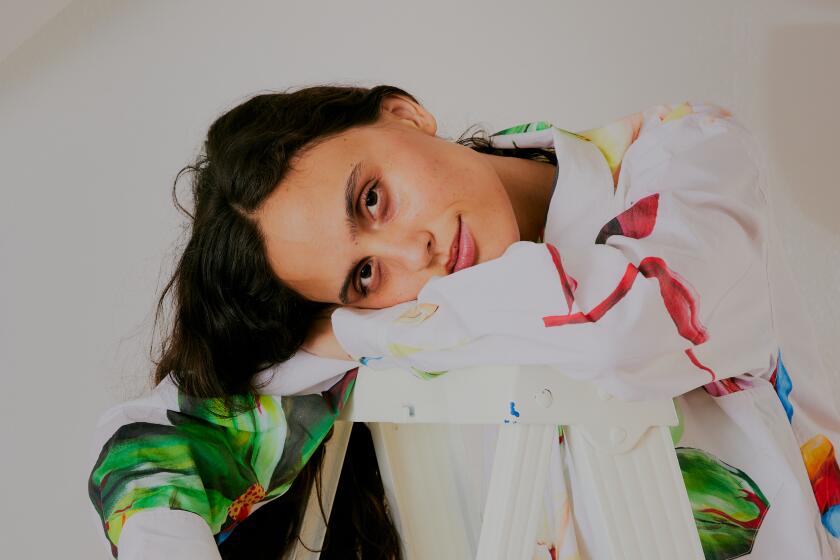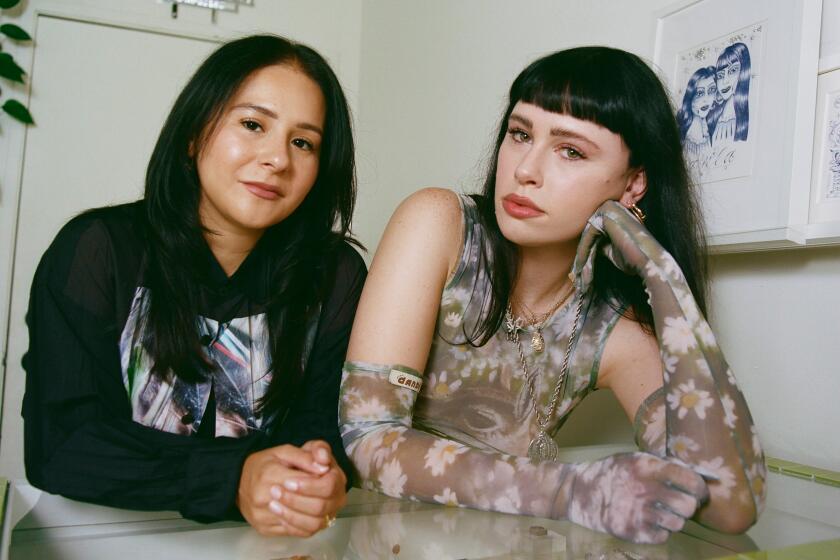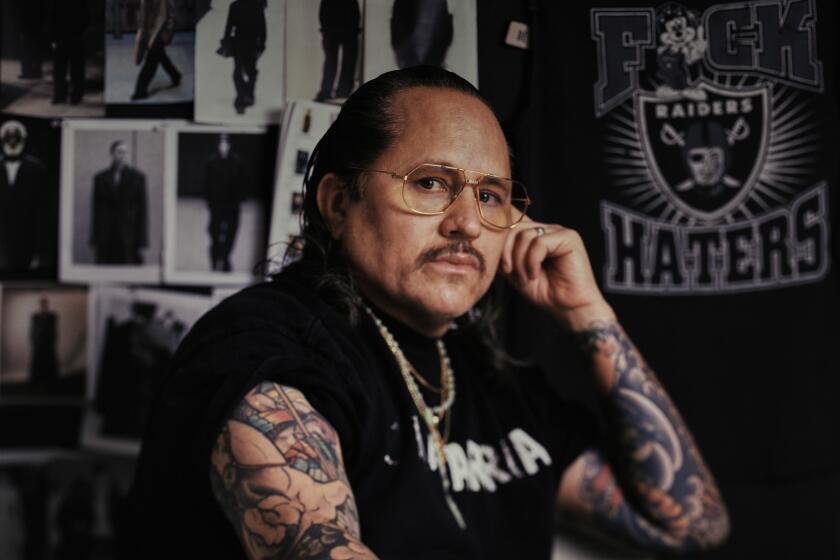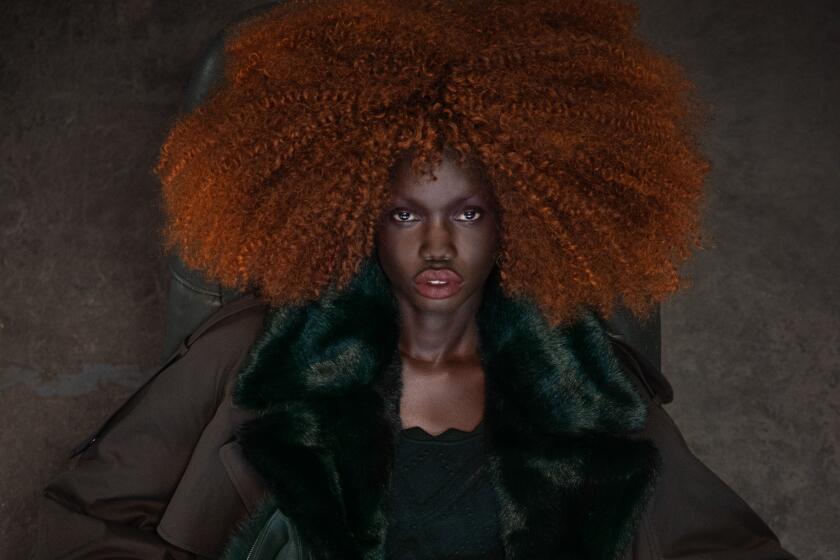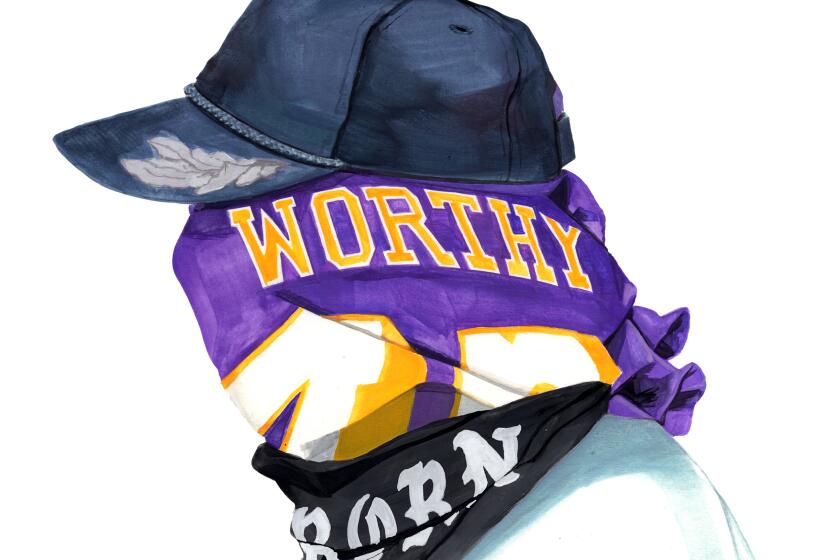- Share via

Finding freedom in doing a lot of things at once, and being good at all of them, is many an Angeleno’s dream. Gabrielle Schwan, the multihyphenate artist, designer and dancer is doing just that. She’s spent much of the last seven years trying things for fun, and then mastering them — from painting fiery flames on reworked denim that she pored over instead of doing homework, to turning after-work hangouts into design collaborations with her friend’s cult-followed brand, Left Hand, before she even formally knew how to sew. Schwan has restarted a few times in a way that feels familiar for many young artists who lean into the unknown — she traded Washington’s Tri-Cities, where she grew up, for New York at 16 years old, ready to formalize the ballet dancing she’d done since she was a toddler. Opportunity and eagerness brought her back to the West Coast soon after, with a dance injury forcing her to find what moved her, only this time off her feet.
Fashion is a canvas for the designer behind the namesake fashion brand. Her handcrafted works are expressions of her desire to make something beautiful.
Schwan has an ease and confidence that tells you she knows what she’s doing, even if she’s doing it for the first time. It’s all about trusting her instincts and not being afraid to try, to keep trying — whether that’s in a more public way or in her parents’ basement during COVID lockdown, learning how to crochet from a YouTube video on infinite loop. A few patterns in, her work found its way into memes, like the time @nolitadirtbag posted Schwan’s mixed crochet Lucien pullover, made in honor of the equally meme’d French restaurant in New York’s East Village, declaring “grandma has done it again,” but this “grandma” was Schwan.
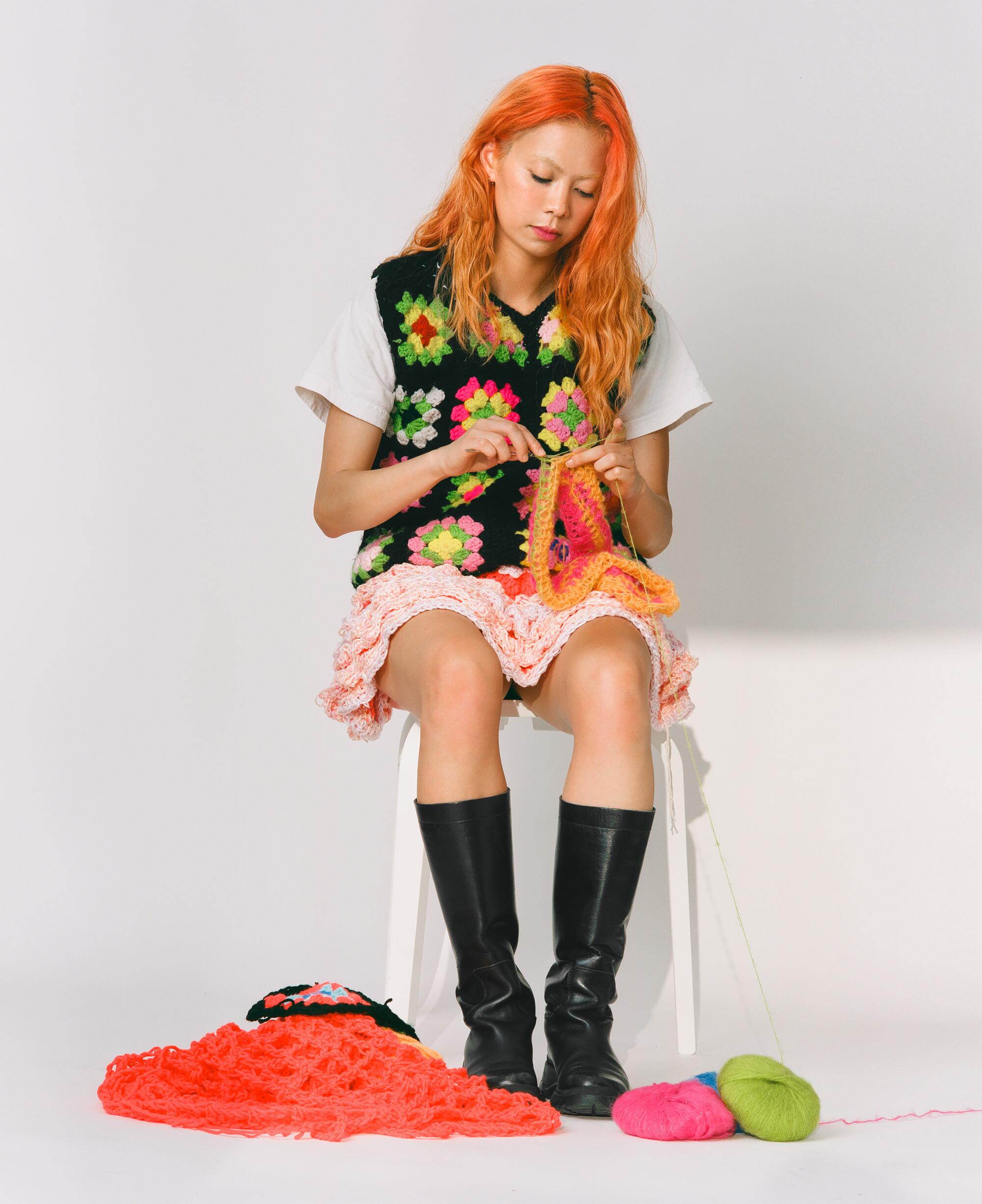
Over the last few years, Schwan has been living between L.A. and New York, designing custom crochet pieces on a commission basis with an occasional hand-to-hand sale after someone sees her work in the wild. “I never really like to remake the same thing,” she says. Meticulous crochet, crafted in both pastel and bolder hues and patterns, replaces the backside of a pair of upcycled jeans — revealing as much or as little skin as the stitch’s spacing allows. She dreams up bloomer shorts, cropped tops, minibags, massive wall hangings, baby clothing and every wearable garment on the spot, dedicating hours to combining her favorite yarns, like the bright, brushed mohairs she fell in love with during a trip to Japan. The results are neither easily duplicated nor ignored.
Physical spaces in L.A. have always been sacred. Ashley S.P. and Jennifer Zapata see their concept shop as a vehicle for community and an homage to their friendship.
Ashley S.P.: You’ve been rocking your signature orange hair since 2016. You can quickly notice the color is everywhere around you. What is it about orange?
Gabrielle Schwan: I just gravitate toward it. It’s one of those colors that you either love or you hate. I’ve had long, dark hair for my entire life because I was a ballet dancer and could never do anything to my hair. Then I bleached it, and they did a bad job. So I started playing with colors. I got bored of pink and red, and there was one friend of mine that suggested I try orange — my favorite color since I was little. I painted a wall orange when I was a kid in my room. [My hair has been] different variations of bright neon yellow-orange; sometimes I’ll do more of a copper, or a peach, and then it’ll always fade into a weird variation.
ASP: It can fade to almost a sunset orange — you’ve mastered an ombre, basically! I can see how orange can be polarizing. The color is prevalent in your design language too — it pops up in your crochets, both big and small.
GS: I like that polarizing aspect of it. A lot of the time when I make stuff, it’s not like I have a set idea for colors usually. I just obviously gravitate toward orange, so it’s going to end up in there.
ASP: Is your crochet work something that was born of having time on your hands or something more precious, maybe a skill passed down to you?
GS: I was bored at home in Washington during COVID and was not into making full-on clothes, so I just watched the same YouTube video on crocheting for hours and learned.
ASP: You were on a crocheting loop.
GS: I watched the same video, over and over again [and] just kept practicing until I finally got decent at it. At a certain point, I was like, “I should make a full bodysuit.” I full-on caterpillar-crocheted a suit on top of me for three days — my parents would come downstairs because they would always wake up early, and they were like, “What are you doing?” Here I was, still crocheting at 6 in the morning. My couple of friends that I would hang out with in Washington got together and I photographed [the suit] on my friend and posted it to Instagram. People just thought it was funny and cool, and then Paper Magazine DM’d me, [saying] they’d love to use some of my crocheted accessories for J Balvin. I’m 5 feet 4 and pretty small. I was like, you can try it — I’m not going to guarantee it will fit but it does stretch, so go for it! And then, to see the photo [of him in it] when they sent it to me — that [was] so cool and it look[ed] so good.
‘No matter what I’m doing, you’ll always know where I’m from, my influences and my culture.’
ASP: When does a crochet feel like it’s done for you? Is there a method, or is it just a feeling, like, “I’m going to sew this final loop and that’s it”?
GS: It’s always been a feeling for some reason. I hate when people are like, “I’m a tastemaker,” but I’ve always had this innate sense — I just know when it looks good. If you work in fashion, you kind of have that eye for what works. And [my eye] got better, especially being around a lot of great designers [when I was working] in a store. I think that helped expand my idea of what I wanted clothing to look like, and what it could look like.
ASP: It’s the biggest jigsaw puzzle, fitting the pieces together.
GS: It’s interesting you say that because crocheting is kind of a puzzle in itself. That’s why I liked it, because I wanted to be making things from scratch, but I didn’t want to be constructing full-on pieces or just sewing. And when I found out how to crochet, it felt like I was building something. It’s a bit freer, because if you mess up a little bit, it’s easy to take apart. It’s easy to add on random bits, it’s just fun.
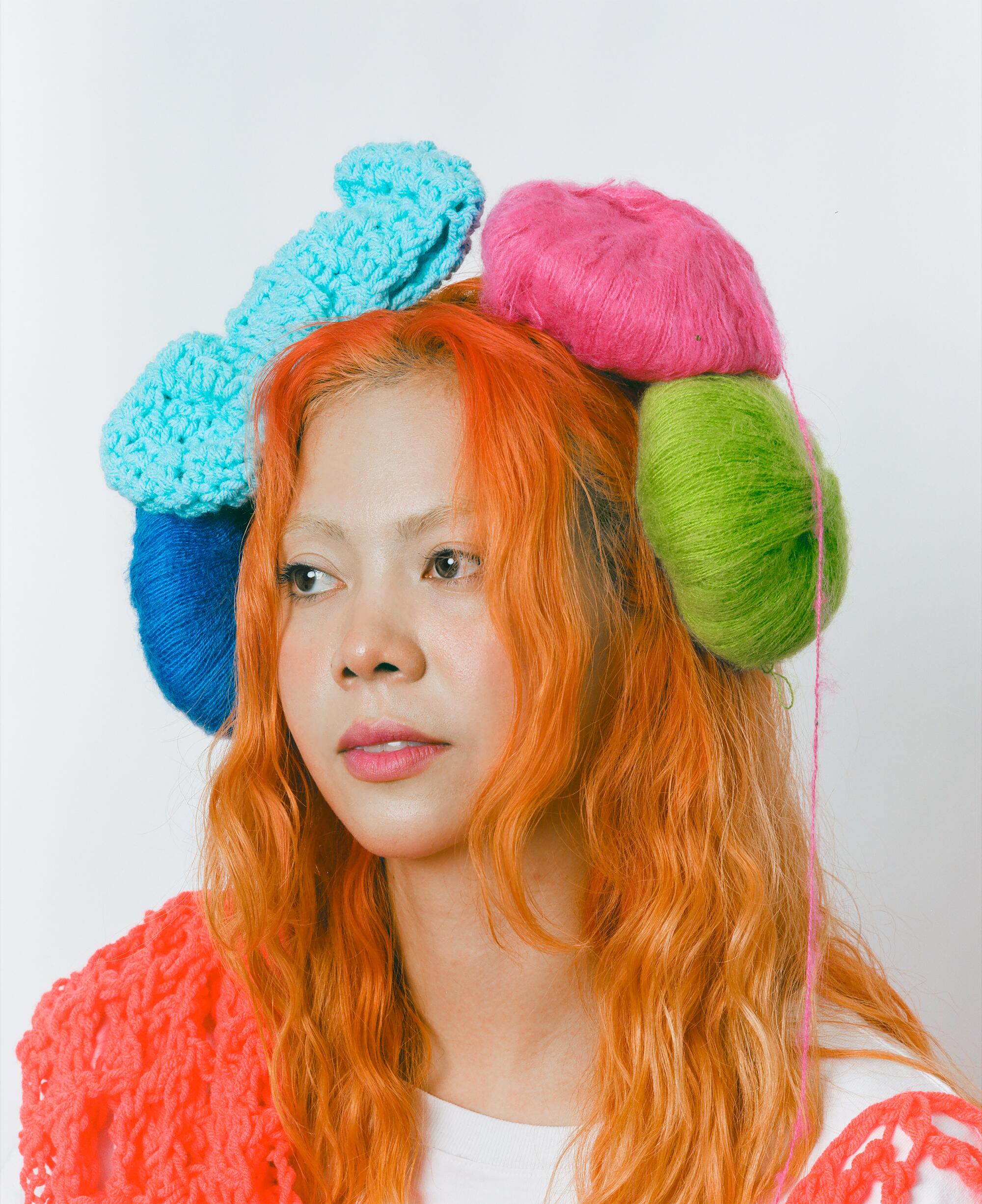
ASP: What keeps you patient in the crochet process?
GS: I’ve spent hours of my life in a ballet studio doing the same thing over and over again. So, in that respect, I don’t think about it. If I really want to make something, I will make it.
ASP: That discipline is ingrained in you basically, it is transferable. Are you still dancing?
GS: Yes, I was dancing today. I’ve been trying to see if I want to do that again for work. [I’ve been dancing] since I was 2 years old. My mom’s a dancer, so as soon as I could walk, she was already trying to point my feet. I graduated high school early, at 16, so I could start my career early. I moved to New York and ended up leaving the dance program at NYU to do a training program in San Francisco with a contemporary ballet company. It was ballet and modern dance, with contemporary techniques as well as a lot of repetition, working with choreographers, working on movement, style. I was dancing eight hours a day, so that’s when it felt serious, but that’s also when I hurt myself. It was one of those overuse injuries, but at the time, I was 17 or something and I just didn’t really know what to do and said maybe let’s take a little break.
ASP: During this time, when you were taking a break, did your fashion interest sort of peak?
GS: That break is when I started getting into fashion and art — I then went to FIDM. I want[ed] to move to L.A., and I [didn’t] really know anything about the fashion industry, but I [wanted] to try this out. I started off doing retail; I was doing the cool, high-end kind. I started at Wildstyle, and then I went to H. Lorenzo and loved it there; it was on Robertson Boulevard and was a nice place to walk around and explore, meet people. My friend Julie [Kucharski] and I worked at Wildstyle together — she started the brand Left Hand. I’d go over to her house every day after work, and we’d make clothes. Working in a store and being around her all the time, I was like, maybe I can learn how to make clothes too. And that just led me into all these different rabbit trails of creative, artist, designer — trying out all these different roles, if you will. I kind of pick up things, but because I’m very much a Type-A Virgo, I have to be good at everything I do. So, any task, skill, job, whatever — I have to be the best.
The city of cement and angels loves some contrast. It loves a little industrial chic.
ASP: It’s interesting that you brought up the Virgo perfectionism because when I think of crocheting, I think of you having to make that perfect loop. To me, this is a perfection hobby, and ballet is a perfection sport. How does perfectionism inform your execution of things? Are we striving for that?
GS: You’re thinking, what’s wrong with this girl? It’s that thing that’s always in the back of my head. When I was younger, it was bad. I was obsessive, had to be perfect and get perfect grades. Then I went kind of opposite for a while because I needed to just chill out. I wasn’t dancing either. But then I started figuring out a different creative outlet — dance was a good one, but it just got to be a two-edged sword where it’s freeing, but not at all.
ASP: I assume there was something rigid and demanding about ballet that made it not freeing anymore.
GS: Exactly. I found that the fashion and art realm was cool because you must be good at certain skills, but you also don’t really have to be — it’s more what you make out of it. In the last couple of years and in my work now, there’s always going to be that hint of perfectionism in the way that I always want to get better at a skill set, at craftsmanship, the technicality of it. But I’ve become a chiller person in general, so if [something] falls apart, I just make a new one. Or, if it doesn’t work, and I don’t like this color, if it’s not perfect, I’m like, eh, whatever. I believe that’s why the color schemes [in my work] are always so random. I’d rather not think through the process. I just go for it.
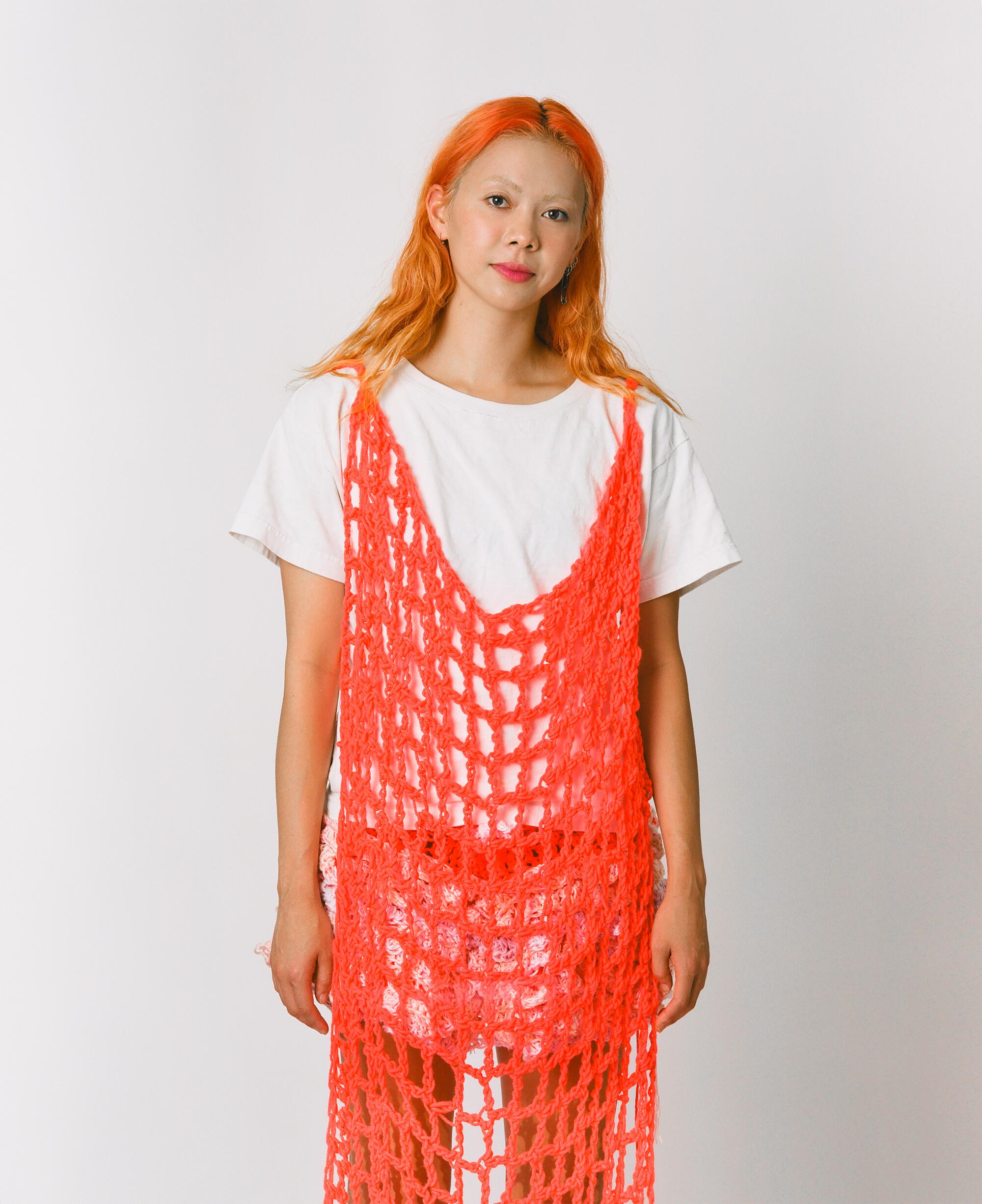
ASP: “Just going for it” shows up in the fact that you don’t sketch anything before starting on a design too.
GS: Like on the low? I don’t know how to sketch. Even if I try really hard, it’s going to take me days to do a sketch — at that point, I might as well just start working on the piece. [A design] kind of just starts from having an idea of what to make, and a bit of forecasting too — like I feel this is going be “next.” I don’t want to do what’s cool now because I’m always thinking ahead. It’s about using what you see now and what you see in the future. Meeting in the middle is usually where I end up because it’s going to be a bit of what I already know how to do while pushing me to try something new. With Left Hand, it was kind of a free-for-all in a way, but not at the same time. Do we try out a new blank? Are we going to do a lot of reworking or are we going to do a lot of textile things? Is this a more Y2K vibe, or a punk vibe? It felt like dress-up. How do I feel today? Or how do I want to make this piece feel?
Artist Jacob Rochester’s portait, a subtle homage to the late Spanto, explores the lens of identity but by way of anonymity.
ASP: As a place you keep returning to, how does Los Angeles inspire your colors, your designs, your process? What does L.A. do for you?
GS: L.A. has done a lot for me. The environment in general put me in a place to start this new side of myself. I don’t want to say new version, because it’s not a new version. I think I just created my own image in what I could do. Before coming here, I would have never even thought about trying to be a “designer,” trying to be an “artist.” I always thought it was silly — I’ve never painted, I’m not an artist; I’m not a designer, I just like randomly destroying some clothes. And then it’s like, oh, wait, I just have to put my mind to it. In meeting other like-minded people, you see we’re all trying this out, we’re trying new things, we’re figuring it out. But I will say L.A. shows in my colorways — those sunsets, those are great.
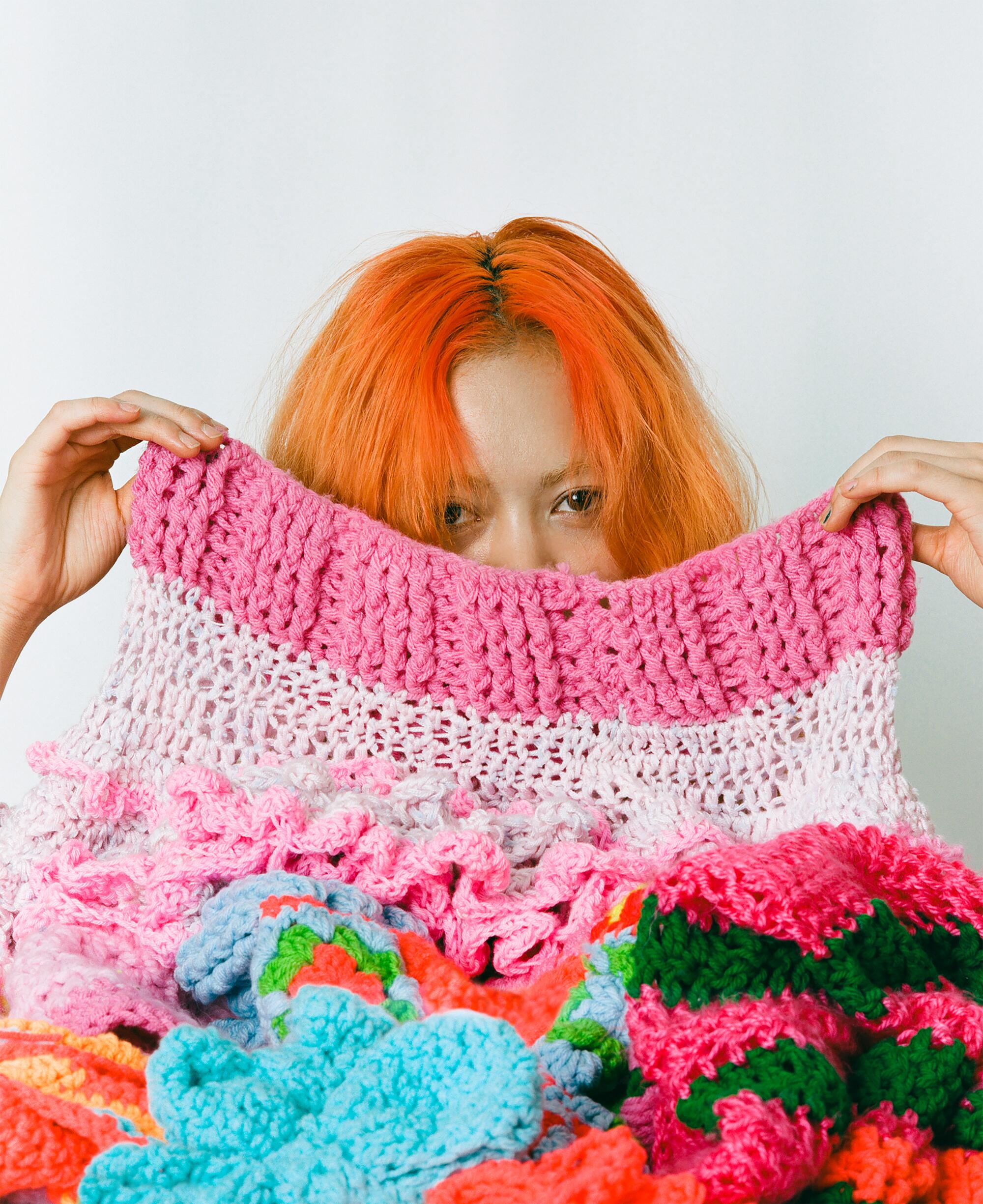
Ashley S.P. is a writer and the co-founder of Echo Park concept shop Género Neutral.

